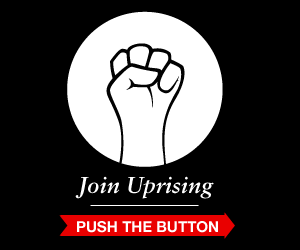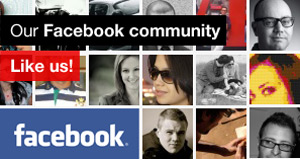#NYIW – An Uprisers Playground.
Posted on 6th Jun 2012 by Simon Dolsten in BlogNew York Internet Week (#NYIW) brings together Silicon Valley gurus, Wall Street venture capitalists, Madison Ave. ad execs and anyone else with an interest in the future of media. Unlike many other media conferences, #NYIW isn’t limited by location. You can catch a blogging panel at the trendy downtown headquarters, go to a networking event at the penthouse of an ad agency or listen to start up pitches at a mid town bar.
This is what makes #NYIW so great, it’s not cut off from its host city but rather a part of it. #NYIW lives and breathes creativity. Cultural marketing and uprising is present everywhere. Companies and speakers are constantly trying to defy industry standards and start movements to distinguish themselves from the clutter. Here are my top 3 uprising trends and takeaways from #NYIW:
1.Proximity Based Social Media
Imagine getting a smart phone notification that a clothing store that you just walked by has a special sale on your favorite brand of jeans or that one of your old college buddies is sitting at a bar across the street. This new concept is called Proximity Based Social Media. Proximity Based Social Media combines the intuitive features of a social media network with the location-based data of a map system. There are already some truly innovative startups working within this medium.
Some apps like Foursquare and Sonar are starting to realize the possibilities of Proximity Based Social Media and how it can make our lives more enjoyable and convenient. There are, however, some major challenges. The apps must be able to sift through all your personal data to truly decipher the information that matters to the user. You don’t want to get information about every single clothing store having a sale within a ten mile radius but rather one or two that match your personal style and taste.
Relevance and aggregation are also crucial for Proximity Based Social Media applications. How can an app aggregate all the information you publicly upload to your social media profile to provide a fulfilling and helpful experience? There’s no single answer but rather a number of theories and ideas that were presented at #NYIW.
Brett Martin, CEO and co-founder of Sonar, spoke about the current state of Proximity Based Social Media and where it needs to go in order to truly integrate itself into our lives and provide a useful service. Martin highlighted the concept of Frictionless Sharing and how it will play a role in the user experience. Frictionless Sharing is sharing that requires little or no effort from the user. For example, when you play a song on Spotify it immediately shows up on your Facebook feed. This requires almost no work from you but the app still shares and collects data. Companies like Sonar aim to make suggestions based on this Frictionless Sharing so you can meet people that have similar interests as you, get great deals at local restaurants and enjoy all of life’s possibilities!
There is still a lot of work to be done and a plethora of opportunities for inspired techies. Proximity Based Social Media apps aim to make suggestions based on what we are already familiar with but the true integrated user experience is derived from the unfamiliar. The unfamiliar would suggest ideas and connections that we have not had past experiences with but carry shades of information and characteristics that spark our interest.
For example, a traditional location based app would suggest that you stop by the local sushi restaurant to pickup dinner on your way back from work since you entered Japanese food as your favorite food on Facebook. A more innovative and transformative app would have suggested an airplane ticket to Japan or a local movie theater that’s playing a film about the ancient Samurai as possible purchases and activities. These apps explore the unfamiliar by relying on your personal information. Companies like Facebook, Foursquare and Sonar have all made great innovations and strides in Proximity Based Social Media but there is still much to come.
2. Tablet Tailored Journalism
News aggregators like The Huffington Post do an outstanding job of efficiently and effectively communicating popular and important news stories. They aggregate important data from across the web and even offer some opinionated and research based stories.
They, however, do not act carry the same investigative grit and truly envelope pushing journalism that traditional newspapers have. The newspapers that do live on the web are often either PDFs of already published works or buggy applications that don’t take advantage of interactive content. The Daily aims to change all of this.
The Daily is an iPad news application that combines the journalistic content of a traditional newspaper along with the interactive experience of the web. Jesse Angelo, editor of The Daily, spoke about the app and the future of journalism at the Newsstand 2.0 panel as part of #NYIW. Angelo does not come from a web background but rather a traditional newspaper foundation. This serves as a tremendous advantage. You can’t read The Daily on your laptop or home desktop computer for good reasons. Too many news sources try to create one-version fits all news experience. This simply does not work. An iPad is a truly unique user experience. The Daily was specifically designed for a tablet and smart phone experience. The 2010 Project For Excellence in Journalism famously claimed that an overwhelming majority of consumers would never pay for online news. Their survey, however, failed to realize that people wouldn’t pay for the quality and experience of web news they were receiving. The Daily is the number one news app and it requires a paid subscription. It has over 100,000 paying subscribers and grows quickly. People will always pay for great content. Quality is king!
3.Sex Doesn’t Sell, Authentic Brand Connections Do!
Every brand wants to create an emotional connection with their consumers, a connection that creates loyalty, recognition and record breaking sales. There’s only one-way to creating these connections – authenticity. Some companies will ignore authenticity and instead take shortcuts. These shortcuts might help you sell some extra units in the short term but won’t establish these very coveted brand connections.
Sex is one of these shortcuts. Putting a bikini clad girl in your commercial will create a brief emotional rush but won’t establish brand recognition and loyalty. Developing a real life character and experience will do the opposite. The problem is that it’s really easy to throw a hot girl in your ad and use her as a spokesperson but it’s very difficult to create an authentic spokesperson or experience. It requires storytelling, creativity, innovation and most of all patience. Brands don’t grow on trees. They’re like expensive wine; they get better with time.
To put this in a larger perspective, we must realize that we live in an oversexed society, a society where shock and nudity will not cut through the clutter, but rather be a part of it. Drive into a major city and pay attention to the billboards and you’ll see for yourself. I call this a Media Disconnect. Companies are disconnected from their consumers and don’t understand how to create brands and content that appeals to them. Shane Smith, founder of Vice Magazine, hosted an eye opening presentation about his company, this Media Disconnect and more generally, what’s going on in the media business and in countries around the world. Smith saw this media disconnect through world wide uprisings.
There are youth uprisings allover the world: protests in the UK, uproar in Greece and general chaos in the Middle East, yet youth programming is still centered around fun, partying and gossip.
This is not the way to establish a brand connection. You cannot keep producing the same content when the world is changing around you. You’ll lose your viewers and consumers. They’ll flock to other places where they are truly exposed to what’s going on and have a deep connection. In this specific case, social media and the web become their escape. The web, however, is too cluttered and too unorganized. There still needs to be some media company, magazine or channel that provides an organized and real perspective into what’s actually going on in the world. This is where Vice comes into play.
Vice recognized this media disconnect and became a power player. Vice used to be a completely different company than what they are today: “we were all about sex, drugs, rock and roll. We were about cocaine and supermodels” said Smith at the presentation. Vice, however, has shifted their focus from sex and partying to politics and “real” issues. They realized the traditional media disconnect and needed to reestablish the connection with their users. Vice ,however, kept their edgy tone, controversial nature and full exposure . Vice truly reaped the benefit of their strong brand connection. Vice currently has a magazine circulation of over 1,000,000, a hugely popular website, 30 offices allover the world, a retail clothing chain, a record label, deals with Intel and CNN and an upcoming news show on HBO . Vice did this through creating authentic relationships with their users. When their audience wanted partying and rock n roll they covered it but when the world was in political uproar they weren’t afraid to go on a news conquest.
Smith’s The Vice Guide To Liberia best encompasses the Vice attitude while delivering crucial content that connects with the youth. The guide covers brutal dictators, poverty and political tension in an edgy fashion complete with Smith as the narrator, cool graphics and blaring music. Vice truly understands the connection brands need to make with their fans and consumers. They provide relevant content while still keeping the edgy and cool tone that made them famous.
These takeaways are only a handful of changes and trends happening in the web, advertising, and media industry. As company become less focused on the bottom line and more focused on a positive user experiences they move away from the aforementioned Media Disconnect and towards Community Integration. Community Integration is more than just selling products but about promoting innovation, creativity and truly game changing ideas. Community Integration happens when consumers become fans. Fans are worth their weigh in gold. They spread your message and buzz across social media channels, camp outside retailers waiting for new releases and most importantly, become loyal users and promoters for years to come.
blog comments powered by Disqus








